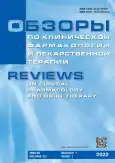Some pharmacological propertyes of Chamerion angustifolium infusions
- Authors: Barnaulov O.D.1
-
Affiliations:
- Bekhtereva Institute of Human Brain
- Issue: Vol 20, No 1 (2022)
- Pages: 105-112
- Section: Phytopharmacology and Phytotherapy
- Submitted: 27.05.2022
- Accepted: 27.05.2022
- Published: 27.05.2022
- URL: https://journals.eco-vector.com/RCF/article/view/108295
- DOI: https://doi.org/10.17816/RCF201105-112
- ID: 108295
Cite item
Abstract
BACKGROUND: Chamerion angustifolium has been popular among the people for many centuries as a substitute for tea and a mild sedative. Leaf infusions are used for neurosis, cephalgia, epilepsy and other neurological diseases.
AIM: Was to experimentally confirm the cerebroprotective properties of Chamerion leaf infusions.
METHODS: We used the methods of maximum electric shock, conditioned passive avoidance, and immobilization stress in rats and mice.
RESULTS: Infusions of leaves experimentally revealed no anticonvulsant properties. Cerebroprotective properties were manifested in the preservation of the passive avoidance conditioned reflex after maximum shock and faster recovery of exploratory behavior. Distinct stress-limiting properties were revealed during immobilization stress in mice. Fermented leaves have been shown to be less effective than non-fermented ones.
CONCLUSION: The data obtained confirm the presence of cerebroprotective properties of the infusion of Chamerion angustifolium.
Full Text
About the authors
Oleg D. Barnaulov
Bekhtereva Institute of Human Brain
Author for correspondence.
Email: barmaulov@mail.ru
Mr. Sci. (Med.), Leading Researcher
Russian Federation, Saint PetersburgReferences
- Amasiatsi A. Nenuzhnoye dlya neuchey. Naychnoe nasledstvo. Moscow; 1990. 880 p.
- Barnaulov OD. Poisk i farmakologicheskoye izucheniye fitopreparatov, povyshayushchikh rezistentnost’ organizma k povrezhdayushchim vozdeystviyam, optimiziruyushchikh protsessy re-paratsii i regeneratsii [dissertation abstract]. Leningrad; 1988. 47 p. Available from: https://rusneb.ru/catalog/000200_000018_rc_299988/ Accessed: 2022 March 23.
- Barnaulov OD. Fitoterapiya bol’nykh rasseyannym sklerozom, epilepsiei, sosudistymi i drugimi zabolevaniyami mozga. Saint Petersburg: Eco-Vector; 2018. 336 p.
- Barnaulov OD. Lekarstvennye rasteniya – surrogaty chaya. Saint Petersburg: Informnavigator; 2016. 447 p.
- Valov RI. Farmakognosticheskoe issledovanie nadzemnoi chasti (Chamerion angusnifolium L.) [dissertation abstract]. Ulan-Ude; 2012. 22 p. Available from: https://search.rsl.ru/ru/record/01005043575. Accessed: 2022 March 23.
- Il’ina S. Fitoterapiya v intimnoy zhizni. Khar’kov, Kiyev, Rostov n/D, 1998. 368 p.
- Il’yuchenok RYu, Chaplygina SR. Vliyanie preparatov eleuterokokka na pamyat’ u myshei. In: Lekarstvennye sredstva Dal’nego Vostoka. Vladivostok; 1972. Vol. 2. P. 83–85.
- Karomatov ID. Prostye lekarstvennye sredstva (opyt primeneniya lekarstvennykh sredstv natural’nogo proiskhozhdeniya v drevnei, sovremennoi, narodnoi i nauchnoi meditsine). Bukhara: Durdona, 2012. 887 p.
- Karomatov ID. Fitoterapiya. Rukovodstvo dlya vrachei. Bukhara: Durdona, 2018. Vol.1. 857 p.
- Kozo-Polyanskii BM. Chainye rasteniya Kazakhstana. Alma-Ata: [b. i.]; 1943. 25 p.
- Krauz VA, Fedotova YUO, Zhokhova YeA, et al. Anxiolytic effect of extracts from Chamaenerium angustifolium (Onagraceae) above-ground part. Rastitelnye Resursy. 2007;43(3):116–121.
- Lazarev NV, Stimulyatsiya lekarstvennymi sredstvami soprotivlyayemosti organizma k infektsiyam. Kazan Medical Journal. 1961;(5):12–17.
- Lazarev NV, Lyublina EI, Rozin MA. Sostoyanie nespetsificheskoi soprotivlyaemosti. Patologicheskaya fiziologiya i eksperimental’naya terapiya. 1959;(4):16–21.
- Polezhaeva IV. Izuchenie ekstraktov nadzemnoi chasti Chamerion angustifolium (L.) Holub. Vestnik Krasnoyarskogo gosudarstvennogo agrarnogo universiteta. 2007;(3):91–94.
- Rastitel’nye resursy SSSR. Tsvetkovye rasteniya, ikh khimicheskii sostav, ispol’zovanie; Semeistva Hydrangeaceae – Haloragaceae. Leningrad: Nauka; 1987. Vol. 3. P. 200–201.
- Tsarev VN, Bazarnova NG, Dubenskiy MM. Kiprei uzkolistnyi (Chamerion angustifolium L.). Khimicheskii sostav, biologicheskaya aktivnost’ (Obzor). Khimiya Rastitel’’nogo Syr’’ya. 2016;(4):15–26.
- Chzhud-shi. Kanon tibetskoy meditsiny. Transl. from Tibetan. Predisloviye, primechaniya, ukazateli D.B. Dashiyeva. Moscow; 2001. 706 p.
- Chen M. Vystupleniye na kongresse VOZ po narodnoy meditsine. Praktich Fitoterapiya. 2008;(1):43–48.
- Esman WB, Alpern HP. Single trial conditioning: methodology and results with mice. Psychol. Rep. 1964;14:731–738. doi: 10.2466/pr0.1964.14.3.731
- Feschenco HI, Oleshchuk GM, Marchyshyn SM, et al. The study of antiulcer effect of lyophilized extract of fireweed herb on the model of ethanol-prednisolone stomach demage in rats. Clinica farmacia. 2019;23(1):11–18. doi: 10.24959/cphj.19.1487
- Kadam P, Patil M, Yaday K. A Reviw of Phytopharmacopial Potential of Epilobium angustifolium. Pharmacognosy J. 2018;10(6): 1076–1078. doi: 10.5530/pj.2018.6.181
- McGauch IL, Alpern HP. Effect of electroshock in memory: amnesia without convulsions. Science. 1966;152(3722):665–666. doi: 10.1126/science.152.3722.665
- Schepetcin IA, Kirpotina LN, Jakiw L, et al. Immunomodulative Activity of Oenothein B Isolated from Epilobium angustifolium. J Immunol. 2009;183(10):6754–6766. doi: 10.4049/jimmunol.0901827








